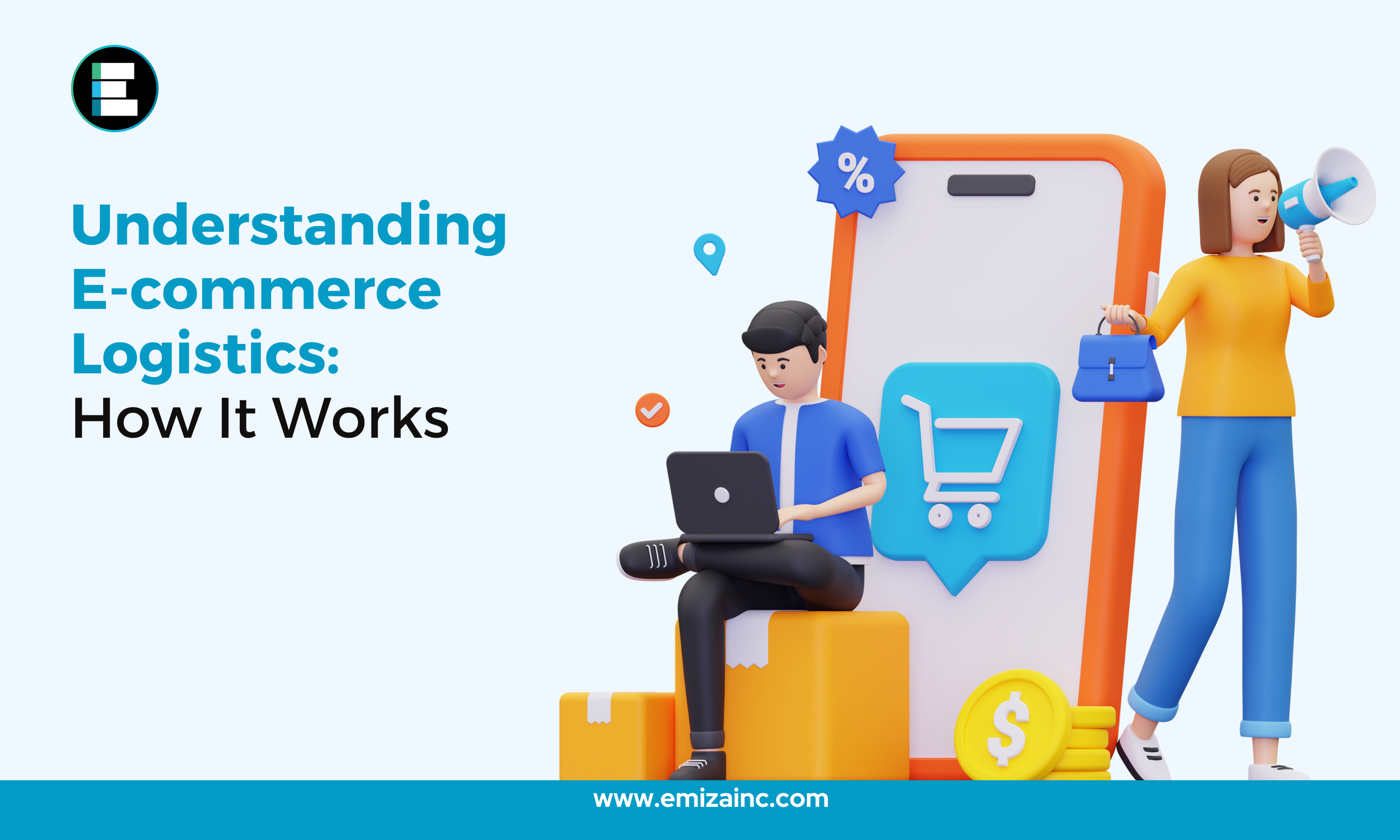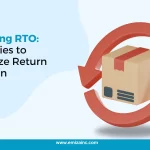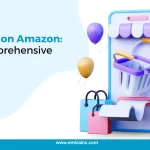The magic of online shopping happens with just a few clicks. But behind that seamless experience lies a complex dance of processes called e-commerce logistics. It’s the intricate web that gets your orders from a warehouse shelf to your doorstep, ensuring a smooth and efficient journey. Whether you’re a budding entrepreneur or a seasoned e-commerce seller, understanding e-commerce logistics is crucial for success.
- The Core Components of E-commerce Logistics
- The Order Fulfilment Process
- Inventory Management: The Backbone of Logistics
- Warehousing and Fulfilment Strategies
- Shipping Options and Carriers
- Returns and Reverse Logistics
- Optimising Your E-commerce Logistics
The Core Components of E-commerce Logistics
E-commerce logistics is a symphony of interconnected processes. Here are the key instruments that play their part:
- Inventory Management: Keeping track of stock levels, ensuring product availability, and managing purchase orders.
- Warehousing and Storage: Storing inventory in strategic locations for efficient order fulfilment.
- Order Fulfilment: Picking, packing, and shipping orders after a customer places one.
- Transportation: Choosing the right carrier and shipping method to deliver orders to customers.
- Returns and Reverse Logistics: Managing customer returns, exchanges, and damaged products.
- Technology: Utilising software to manage inventory, track orders, and automate processes.
The Order Fulfilment Process: From Click to Delivery
Let’s break down the order fulfilment journey, the heart of e-commerce logistics across various platforms:
- Customer Places an Order: Whether on your own online store or popular e-commerce marketplaces like Amazon, Myntra, Ajio, and Tata Cliq, customers browse, add items to their cart, and finalise their purchase.
- Order Processing: Your e-commerce platform receives the order and transmits it to your fulfilment system, checking inventory availability.
- Picking and Packing: In the warehouse, orders are picked from storage locations and undergo a quality check.
- Packaging: Items are securely packaged to withstand transportation, regardless of the platform they were ordered from.
- Shipping Label Generation: A shipping label is generated with the customer’s address and tracking information, facilitating smooth delivery.
- Shipment Handoff: The packaged order is handed off to the chosen carrier, whether for delivery to the customer’s doorstep or designated pick-up location.
- Delivery Confirmation: Customers receive notifications and order status updates, ensuring a seamless shopping experience across platforms.
Inventory Management: The Backbone of Logistics
Inventory management is the foundation of efficient e-commerce logistics. It involves keeping track of your stock levels, forecasting demand, and ensuring you have the right products in stock at the right time. Some key practices include:
- Stock Keeping Unit (SKU) Management: Assigning unique identifiers to each product variation for accurate tracking.
- Demand Forecasting: Predicting future sales trends and ordering inventory accordingly to avoid stockouts or overstocking.
- ABC Analysis: Classifying inventory based on value and demand to prioritise storage and reordering strategies.
- Warehouse Layout Optimization: Designing your warehouse layout for efficient picking and packing processes.
By implementing strong inventory management practices, you can minimise delays, reduce storage costs, and ensure customer satisfaction.
Warehousing and Fulfilment Strategies
The choice of warehousing strategy depends on your business size, product volume, and budget. Here are the main options:
- In-House Fulfilment: You handle all aspects of storage, picking, packing, and shipping yourself. This is ideal for small businesses with limited inventory.
- 3PL Warehousing: You outsource fulfilment to a third-party logistics (3PL) provider. They handle storage, picking, packing, and shipping on your behalf. This is a popular choice for businesses that require scalability and expertise.
- Dropshipping: You partner with a supplier who stores and ships products directly to your customers after receiving orders. This requires minimal upfront investment but gives you less control over inventory and shipping.
Each strategy has its pros and cons. Carefully consider your needs before making a decision.
Shipping Options and Carriers
E-commerce businesses offer a range of shipping options to cater to different customer preferences and budgets. Common options include:
- Standard Shipping: The most economical option, but with longer delivery times.
- Expedited Shipping: Faster delivery at a higher cost.
- Next-Day Shipping: Deliveries reach the customer within 24 hours, typically the most expensive option.
- Free Shipping: A popular strategy to attract customers, but it can impact your profit margins.
- Carrier Selection: Choosing the right shipping carrier depends on factors like cost, speed, reliability, and delivery area coverage. Popular options include:
- National Carriers: Major players like FedEx, UPS, and DHL offer a range of shipping options and extensive coverage.
- Regional Carriers: Regional carriers like USPS or local couriers can be cost-effective for specific areas.
- E-commerce-Specific Carriers: Carriers like Blue Dart cater specifically to e-commerce businesses and offer technology integrations for seamless order processing.
Compare rates, services, and coverage areas before selecting a carrier. Consider offering a variety of shipping options to cater to different customer needs.
Returns and Reverse Logistics
Returns are an inevitable part of e-commerce. Having a smooth and efficient returns process is crucial for customer satisfaction. Here are some key aspects:
- Returns Policy: Clearly define your returns policy on your website, outlining accepted reasons, timeframes, and return shipping costs.
- Returns Portal: Offer a user-friendly online portal for customers to initiate returns and track their status.
- Reverse Logistics: Develop a system for receiving, inspecting, and processing returned items. Decide on restocking, refunding, or discarding options.
An efficient reverse logistics process minimises losses and keeps customers satisfied, encouraging repeat purchases.
Optimising Your E-commerce Logistics
Here are some strategies to optimise your e-commerce logistics for efficiency and cost-effectiveness:
- Technology Integration: Utilise warehouse management systems (WMS) and order management systems (OMS) to automate processes, streamline workflows, and improve data visibility.
- Fulfilment Network Optimization: Consider using a multi-warehouse strategy with strategically located warehouses to reduce shipping times and costs.
- Packaging Optimization: Choose the right packaging materials to minimise package size and weight, reducing shipping costs.
- Carrier Negotiation: Regularly negotiate pricing and service agreements with your chosen shipping carriers for better rates.
By constantly optimising your e-commerce logistics, you can ensure faster fulfilment times, lower costs, and a more competitive edge.
Conclusion
E-commerce logistics is a complex but crucial aspect of running a successful online business. Understanding each step, from inventory management to delivery, empowers you to make informed decisions and optimise your supply chain.
By implementing efficient strategies, you can ensure a seamless customer experience, build trust, and foster long-term customer loyalty. Remember, a well-oiled e-commerce logistics engine is the key to turning clicks into satisfied customers.



